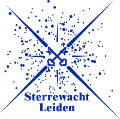| Both sides previous revisionPrevious revisionNext revision | Previous revisionNext revisionBoth sides next revision |
| linux:gnome [2016/12/08 14:22] – [User menu] jansen | linux:gnome [2018/01/29 15:55] – [User menu] jansen |
|---|
| * **Windows**: "focus mode": By default, you have to click on a window before you can type in it, whereas the old default for most people was "focus follows mouse", ie: move the mouse pointer onto a window, and type in it. You can also select "Automatically raise windows", which will bring to the foreground the window in which you position the mouse. | * **Windows**: "focus mode": By default, you have to click on a window before you can type in it, whereas the old default for most people was "focus follows mouse", ie: move the mouse pointer onto a window, and type in it. You can also select "Automatically raise windows", which will bring to the foreground the window in which you position the mouse. |
| * In this same tab, you can also select the "Window action key". This is the modifier key that works with the mouse for quick actions on the current window, e.g. with the middle mouse button, this key starts moving the window, and with the right mouse button, it pops up the action menu. In almost any other Linux desktop, this action is bound to the Alt key, but at some point, Gnome changed this to "Super", which is actually the Windows logo key. Starting with [[Fedora 21]], it is up to the user to choose between Alt and Super, or to disable this function. | * In this same tab, you can also select the "Window action key". This is the modifier key that works with the mouse for quick actions on the current window, e.g. with the middle mouse button, this key starts moving the window, and with the right mouse button, it pops up the action menu. In almost any other Linux desktop, this action is bound to the Alt key, but at some point, Gnome changed this to "Super", which is actually the Windows logo key. Starting with [[Fedora 21]], it is up to the user to choose between Alt and Super, or to disable this function. |
| | * **Extensions**: You may want to enable the "topicons plus" extension, in order to see "status icons" that used to be in the system tray area (where still are on other desktops). This includes skype, dropbox, owncloud etc. |
| |
| There are many more settings, but this selection will probably be useful for many people. | There are many more settings, but this selection will probably be useful for many people. |
| |
| ===== User menu ===== | ===== User menu ===== |
| In the top right corner of the desktop, is a menu combining various settings: volume control, network, logout/switch user, power and preferences. At first, it may look strange, because the top bar disblays separate icons for volume, power etc, but what you click in this area doesn't matter, in all cases you get a pulldown menuy containing these settings: | In the top right corner of the desktop, is a menu combining various settings: volume control, network, logout/switch user, power and preferences. At first, it may look strange, because the top bar displays separate icons for volume, power etc, but what you click in this area doesn't matter, in all cases you get a pull-down menuy containing these settings: |
| * Volume: here you can select the audio volume | * Volume: here you can select the audio volume |
| * Network: this should say "Wired" and "connected". Please leave it like that!! There is nothing to be gained by messing up your network connection. | * Network: this should say "Wired" and "connected". Please leave it like that!! There is nothing to be gained by messing up your network connection (but it is hardcoded into the Gnome shell, so not possible for us to remove this setting). |
| * Your name: Click your name to log out, or to switch user . Switch user brings you to a login window where another user can log in, while your session will be locked and keeps running. So this is useful to temporarily allow someone else to use your screen. | * Your name: Click your name to log out, or to switch user . Switch user brings you to a login window where another user can log in, while your session will be locked and keeps running. So this is useful to temporarily allow someone else to use your screen. |
| * A tool icon: this opens the preferences window, divided in personal, hardware and system preferences. Only the personal preferences should be changeable for you, although some hardware properties seem to be accessible in the current setup. Please be careful! It may be easy to mess things up, and hard to fix. | * A tool icon: this opens the preferences window, divided in personal, hardware and system preferences. Only the personal preferences should be changeable for you, although some hardware properties seem to be accessible in the current setup. Please be careful! It may be easy to mess things up, and hard to fix. |

